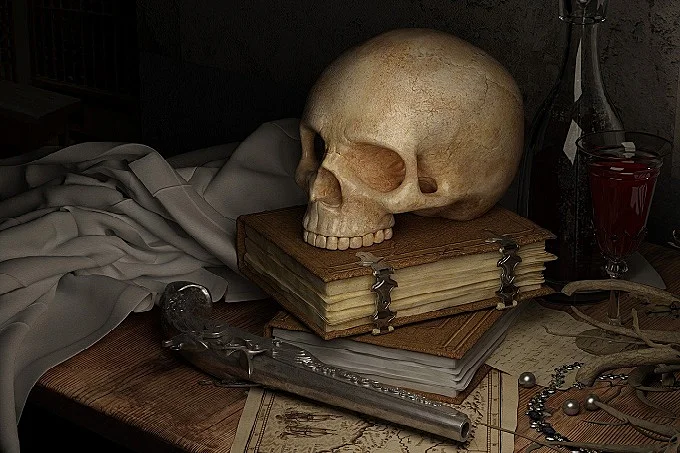5 persons who died in a noble and honorable manner

What will most people do when faced with the risk of dying right here and now? They will fall into indescribable horror and will do whatever they say, just to live a little longer. That is why people obediently dig their own graves when a man with a pistol stands over them because deep down, they hope that everything will be okay. We do not condemn this, since we ourselves are scared of death as hell.
But there are examples when people literally spat in the face of death and showed that they were not at all afraid of it. They met their death with nobility and honor, which earned them eternal glory.
Sempronius Densus
We have already talked about how the Roman emperors replaced each other, sometimes at intervals of several months. All because of the desire to quickly take the throne by any means. So it was with the Emperor Servius Sulpicius Galba, who was destined to sit on the throne for less than a year.
Galba was childless and decided to adopt Lucius Calpurnius Piso Frugi Licinian, but his close friend, Mark Salvius Othon, did not like this. Then he decided to eliminate the emperor and become the ruler of Rome himself.
On January 15, 69, a mob attacked Galba and Piso in the street. Almost all of the Praetorians, the emperor’s personal bodyguards, joined the crowd. And only one Sempronius Densus, whom Galba appointed Piso’s personal bodyguard, did not go over to the side of the enemy and did not retreat. While his former comrades-in-arms tried to capture the emperor and his son, Sempronius was unshakable and fought with the apostates. This allowed Piso to escape. Sempronius himself fought off opponents for several minutes before the enemy’s sword defeated him and fell in battle. This moment has been immortalized in Roman history as one of the noblest deeds.
William Lewis Herndon
In the films, you can see scenes when the captain goes to the bottom with his ship. Most often, at such moments, the “noble” captains of the pirate fleet are shown, and it looks like an embellished story to arouse our sympathy. But such stories happened in reality.
In September 1857, the steamer SS Central America, captained by William Lewis Herndon, was caught in a three-day hurricane off Cape Hatteras. But the captain and his crew bravely coped with the elements, and yet, due to the stoppage of the steam boilers and a large amount of water that got on board, the ship began to sink. Since there were, in addition to 575 passengers, 15 tons of gold on board, the ship sank quickly, and the captain, instead of panicking, began to help the passengers board the Marine Corps brig, who had arrived to rescue people. However, there was only enough room for 152 women and children. One of the women, William Lewis Herndon, gave his watch and asked her to give it to his wife, and he himself said that he would not leave the ship as long as at least one person remained on it.
Alas, the rest of the ships did not have time, and the ship sank, and with it, 423 people, including the captain. Witnesses to the event claimed that Captain William Lewis Herndon, in full naval uniform at the helm, hat in hand, head bowed, humbly recited a prayer until the ship sank under the water. Captain William Lewis Herndon’s valor and moral character inspired the Americans so much that they named cities in several states after him and erected a monument to him.
Benjamin Guggenheim
On April 14, 1912, the Titanic steamer collided with an iceberg and sank, killing more than 1,500 people. Benjamin Guggenheim, an American businessman, sailed on the same ship. When the collision occurred, and it became clear that the ship would sink, Benjamin Guggenheim escorted his mistress, French singer Leontine Aubar and the maid Emma Sögesser to the lifeboat and told his chosen
However, Benjamin Guggenheim himself understood that the situation was much more serious than what could be fixed by repairs, so he returned with his valet Victor Guillot to the cabin, they changed into tuxedos and went to the central hall, where they slowly sipped whiskey and smoked cigars until the moment the ship sank. One of the survivors relayed the last words of the Guggenheim, which sounded like “if anything happens to me, tell my wife that I have done everything in my power to do my duty.”
Michelle Ney
Michel Ney was one of the most famous marshals of the army of Bonaparte Napoleon, and the emperor of France himself called him the bravest of the brave. And he really deserved these words because the marshal never gave reason to doubt his courage. When in 1815 Ney fought on the side of Napoleon at the Battle of Waterloo, five horses were killed under him, but he, again and again, found a new one and, being in a tattered uniform and with a face blackened from gunpowder, continued to lead the soldiers into battle. There he uttered his famous words: “Look how the Marshal of France is dying!”
After the defeat in the Napoleonic Wars, Michel Ney was captured and convicted of high treason. No one in the military court dared to convict Ney because he consisted of former associates of the marshal. Then the role of the judge was taken over by the Chamber of Peers, which made a harsh decision – the death penalty.
Michel Ney was sentenced to death, and he was not afraid of this decision. On the contrary, with his last wish, he demanded that he be given command over his execution. He refused the blindfolds, as was customary, and, according to witnesses, said the following words to the firing squad: “Soldiers, when I give the command to fire, shoot right in the heart.” After that, he said: “I protest against my condemnation, I have fought a hundred battles for France, and not one against her,” and then gave the order to shoot. Michel Ney’s fearlessness later prompted the French to erect a statue of the marshal at the site of the execution.
Agis III
We are well aware of the events in the Battle of Thermopylae, where a narrow passage was defended by 5 to 7 thousand Greeks, opposing a Persian army of 200 thousand soldiers. In that battle, the Spartan king Leonidas I died along with his soldiers, forever inscribing his name in history.
But he was not the only king of Sparta who did not flinch in battle and stood to the end. Another king, Agis III, who lived 100 years later than the famous Spartans, also died with honor. In 331, he fought in an uprising against the Macedonians and laid siege to the city of Megalopolis, which remained loyal to Macedonia. However, the commander of Macedonia, Antipater, managed to gather an army of up to 40 thousand people against the rebellious Greeks and entered the battle against the Spartans. Despite the numerical superiority, the rebels, commanded by Agis III, were able to kill 3,500 Macedonians, losing 5,000 soldiers. In that battle, up to a quarter of all full-fledged citizens of Sparta died.
When it became clear that defeat was inevitable, Agis III, trying to gain time for the retreat of the wounded, ordered his soldiers to leave, and he himself took the blow, fighting to the bitter end. The historian Diodorus wrote that the king fought gloriously and fell only after many wounds, having managed to kill several enemy soldiers.




